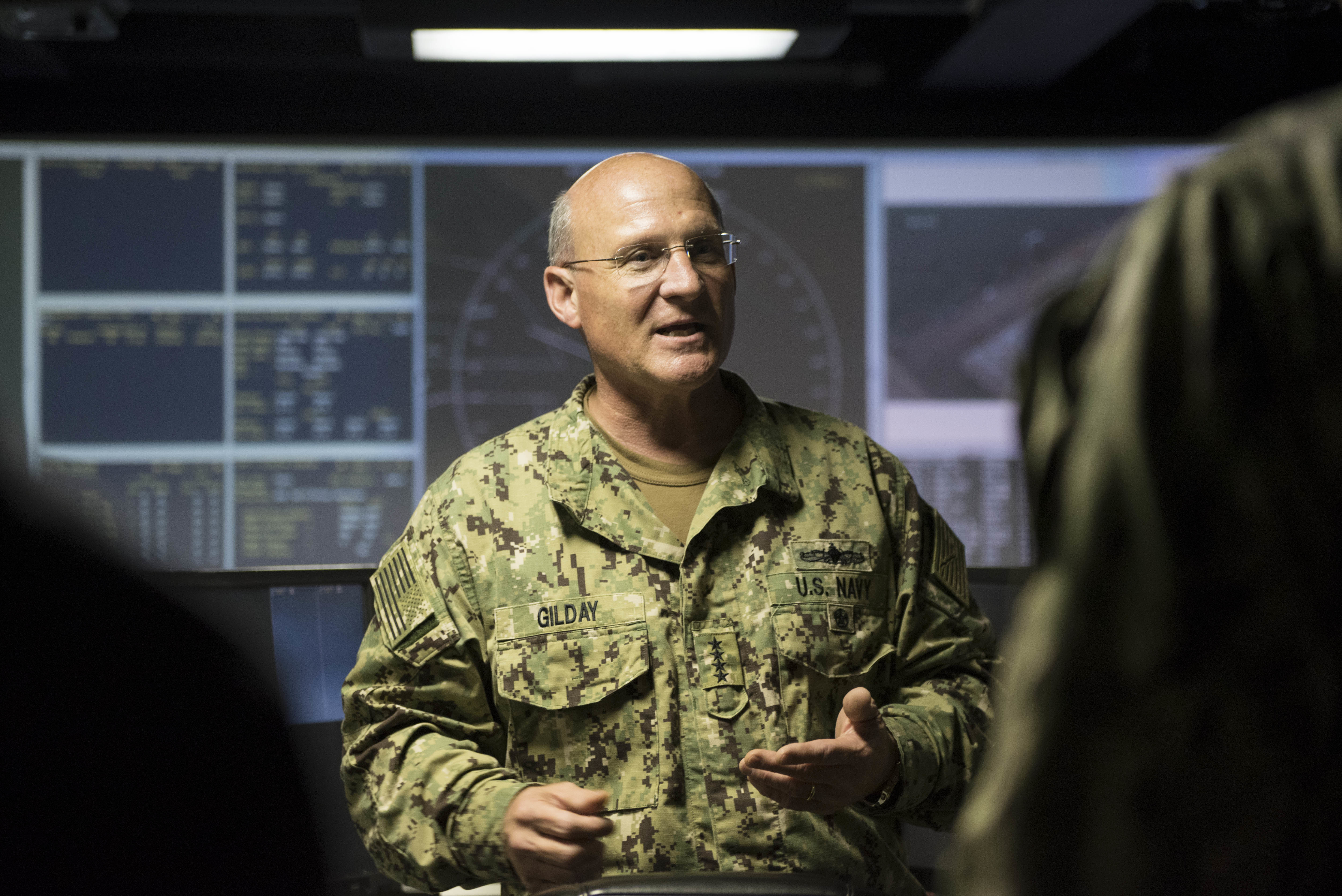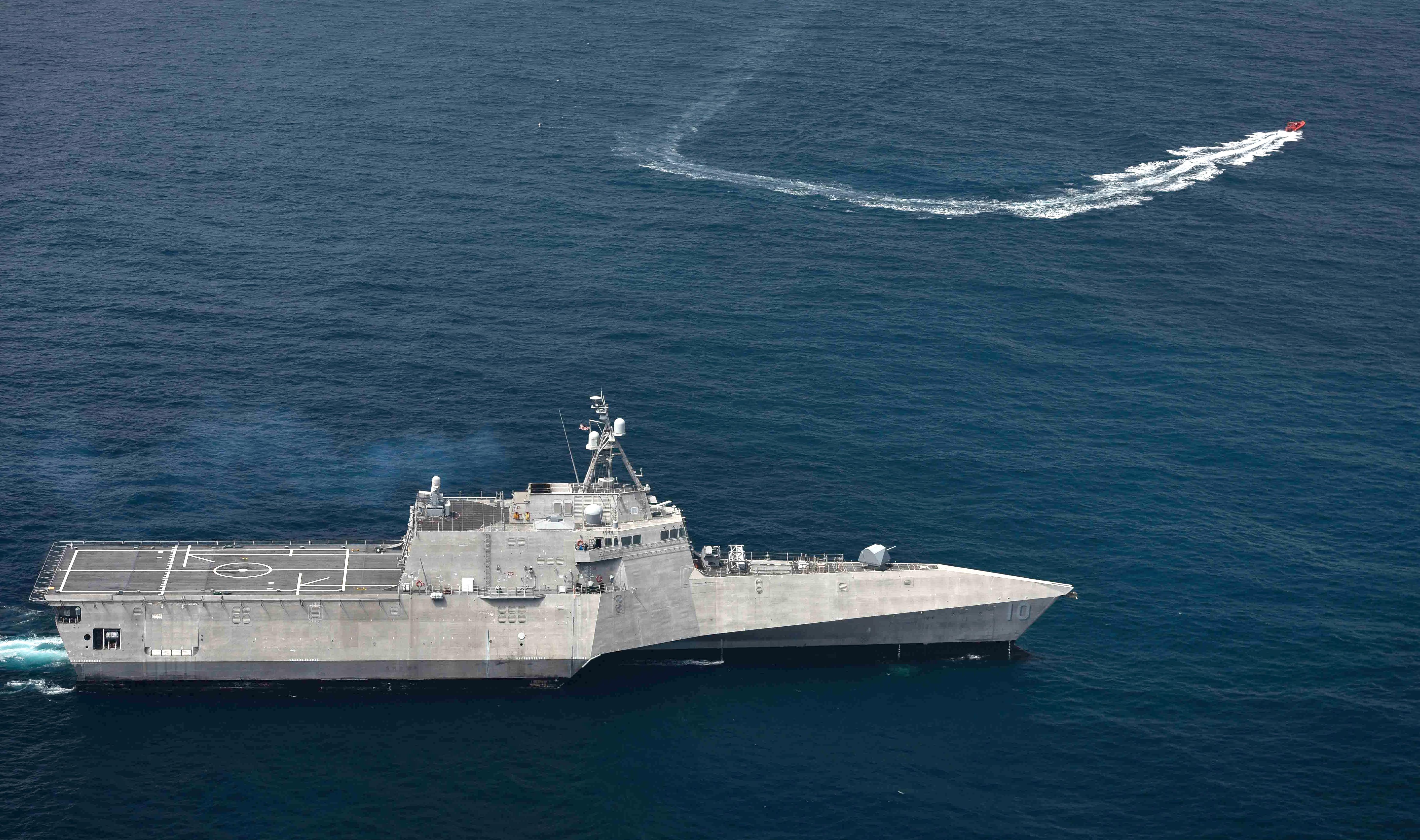
With a focus on three core themes, Chief of Naval Operations Adm. Mike Gilday released a streamlined effort chopping up last year’s “A Design for Maintaining Maritime Superiority 2.0” into a more digestible document.
Gilday’s Wednesday update to Design 2.0 is a Fragmentary Order, distilling the Navy’s plan for maritime superiority into three sections – Warfighting, Warfighters and the Future Navy.
Each section includes a description clearly defining the Navy’s goal — essentially a bottom line up front — and subsections detailing what actions are expected to meet these goals. Gilday’s update is not a static document. He sets deadlines in early 2020 for status reports on how the Navy intends to satisfy several of the actions under each theme.
Warfighting

The end state is, “A Navy that is ready to win across the full range of military operations in competition, crisis, and contingency by persistently operating forward with agility and flexibility in an all- domain battlespace.”
Particular focus will be on further integrating Navy operations with the Marine Corps. Gilday also wants the Navy to assess its Optimized Fleet Response Plan to balance force generation requirements with the need to provide sailors and commands with predictable rotational deployments to allow for maintaining and modernizing the fleet.
Warfighter

The end state is, “A world-class naval force through recruitment, education, training, and retention of talented American men and women – a force that also empowers Navy families through the initiatives under the Navy Family Framework 3.0.”
Education and training are integral components of developing critical thinking skills at all levels of the force. The Navy’s recently hired chief learning officer and the newly formed warfighting development directorate OPNAV N7 will be leading this effort.
Future Navy

The end-state envisions a fleet designed to “Ensure the wholeness of combat-capable and lethal forces maximizing the benefits of Distributed Maritime Operations, Expeditionary Advanced Base Operations, and Littoral Operations in a Contested Environment.”
Manned and unmanned technology developments will focus on improving lethality in a cost-conscious manner. Gilda wants the Navy to use ongoing Department of Defense audit initiatives to refine how the service spends money. Gilday also wants the Navy’s logistical systems to improve to enhance the efficient deployment of forces.
Keeping the Design
Gilday’s update does not rescind the Design 2.0’s four color-coded lines of efforts; his FRAGO uses the existing Design 2.0 to underpin his vision for how the Navy will maintain maritime superiority.
“This Fragmentary Order is written for senior Navy leaders to simplify, prioritize, and build on the foundation of Design 2.0 issued in December 2018,” Gilday wrote. “We will focus our efforts toward Warfighting, Warfighters, and the Future Navy, expanding on the momentum we have gained as a Navy over the past two years guided by both the National Defense Strategy (NDS) and the National Military Strategy (NMS).”
A Design for Maintaining Maritime Superiority, Version 1.0, was released by former CNO retired Adm. John Richardson in January 2016. A year ago, Richardson released an updated Design 2.0 to align the Navy with President Donald Tump’s National Security Strategy and then-Secretary of Defense Jim Mattis’ National Defense Strategy.
However, several current and former Navy officials have told USNI News that sailors viewed both versions of Richardson’s design as difficult to comprehend.
USNI News has learned Navy officials were so concerned about Navy personnel’s implementation of Design 2.0 that it conducted at least one survey after the December 2018 launch to gauge the force’s ability to understand, comprehend, and implement its four core attributes and four lines of effort.
Results of the surveys were not released in response to a USNI News Freedom of Information Act request to review the survey. The service says the survey is an example of “inter-agency records that are pre-decisional and part of the deliberative process,” according to a letter to USNI News from the Naval Inspector General’s office.
“I am confident that we will maximize the Navy we have today while delivering the Navy that our nation will rely upon tomorrow,” Gilday concludes.





